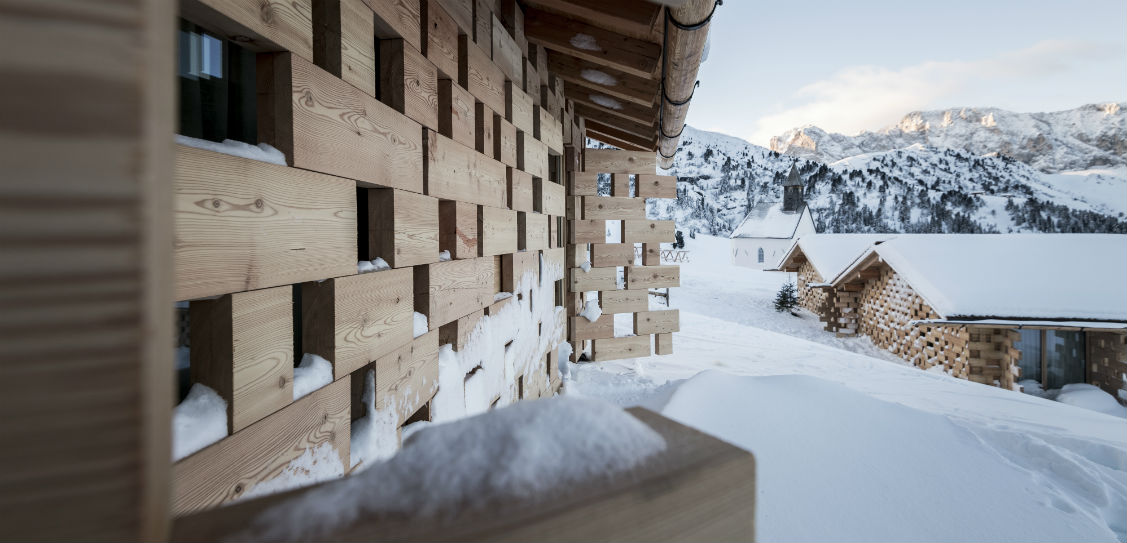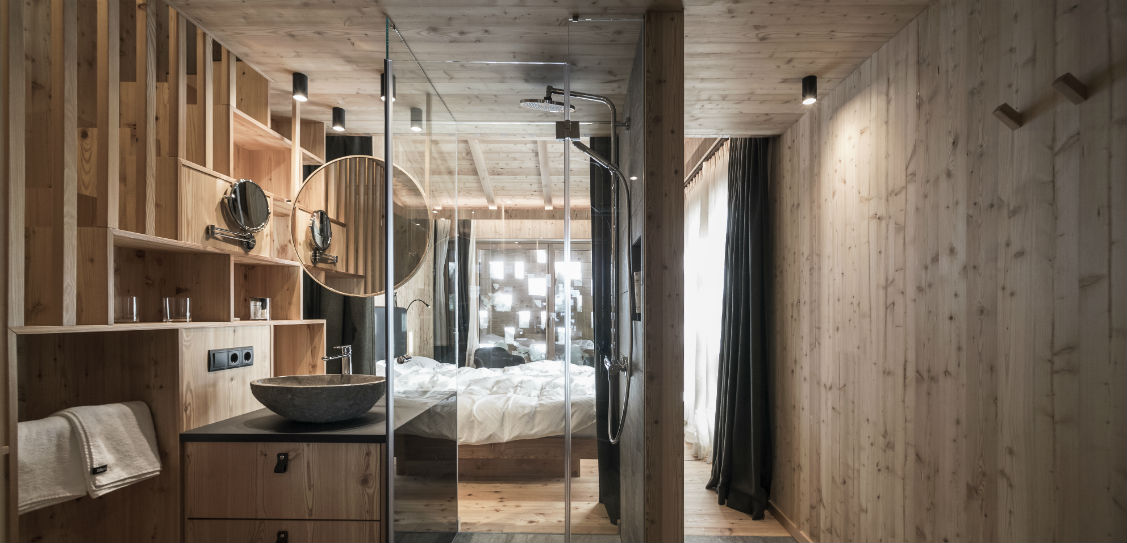The Zallinger Refuge at the Alpe di Siusi was recently renovated and expanded to include hotel and chalets that have become an exemplar of responsible tourism.
The project marked a historical and landscape recovery in a high-mountain context. The nineteenth-century barns were reborn as mini-chalets to bring back the charm of an alpine village.
The goal of Noa* (network of architecture) in the planning and expansion of the Zallinger Refuge was to create new spaces without altering the existing volumes or the feel of a small village.
The South Tyrolean tradition is combined with comfort, quality of design and sustainability. The ClimaHotel was built with maximum environmental protection in every aspect of construction.
The aim was to improve the quality of an old mountain hotel structure without altering the delicate landscape and environmental balance to ensure sustainability.
The Zallinger Hut was first built in the middle of the 19th century and was formerly surrounded by seven barns and a small church.
Subsequently the barns had been replaced by a single large building (1880), which over time had assumed other functions.
The extension was an opportunity to revive the original structure, restructure the central body of the hotel and build seven new chalets respecting the original site layout.
External claddings to the chalets are made of blocks of solid wood appearing to be stacked together in an alternation of full and empty spaces, becoming a dominant motif of the new settlement.
The outcome, inspired by the structure of the ancient barns, avoids the annoying reflections of the exposed windows, inappropriate in a high mountain context.
Sustainability, respect for the mountains and direct contact with nature are the principles that have guided all design choices.
All the materials have been certified and the complex of buildings, heated by pallets, has obtained the Klima Hotel certification.
It was even decided not to illuminate the paths connecting the chalets and the shelter to avoid light pollution and allow guests, equipped with lanterns, to admire the charm of the starry sky.
Designer Stefan Rier said: “We want to propose new models of life and hospitality that on the one hand recover traditional forms and materials, on the other hand express quality of design, high levels of comfort and sustainability.”
The World Architecture News Awards features the best in international retail design, as well as other types of current and future projects. To see the full list of winners and categories for the WAN Awards 2018, click here



